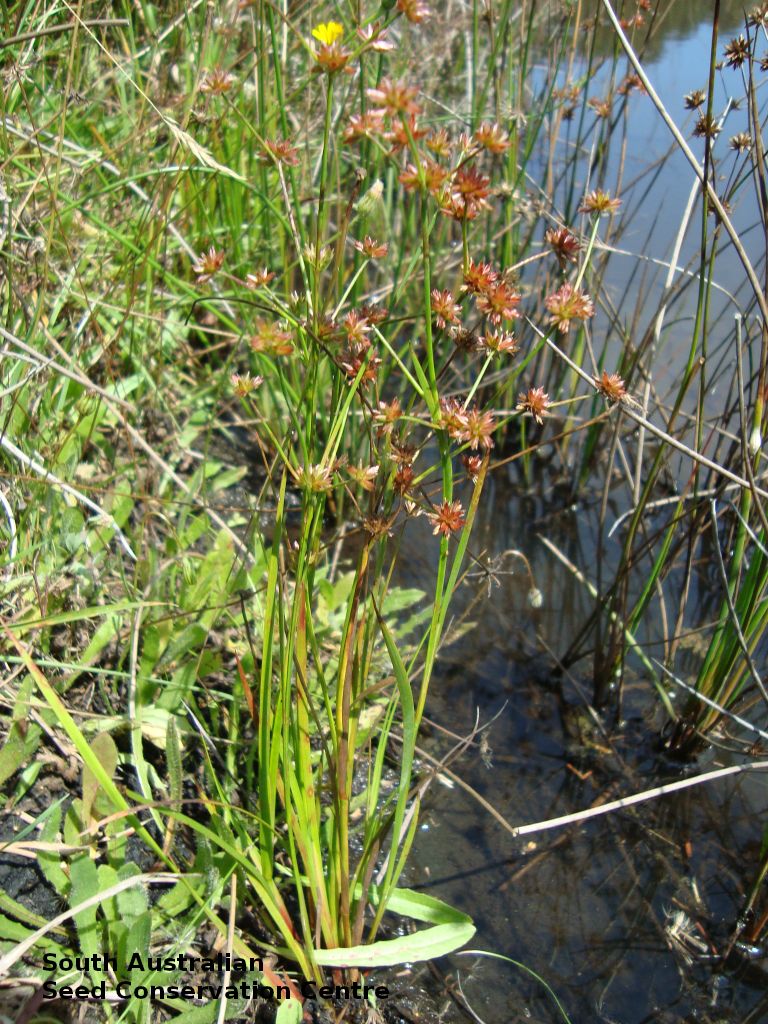

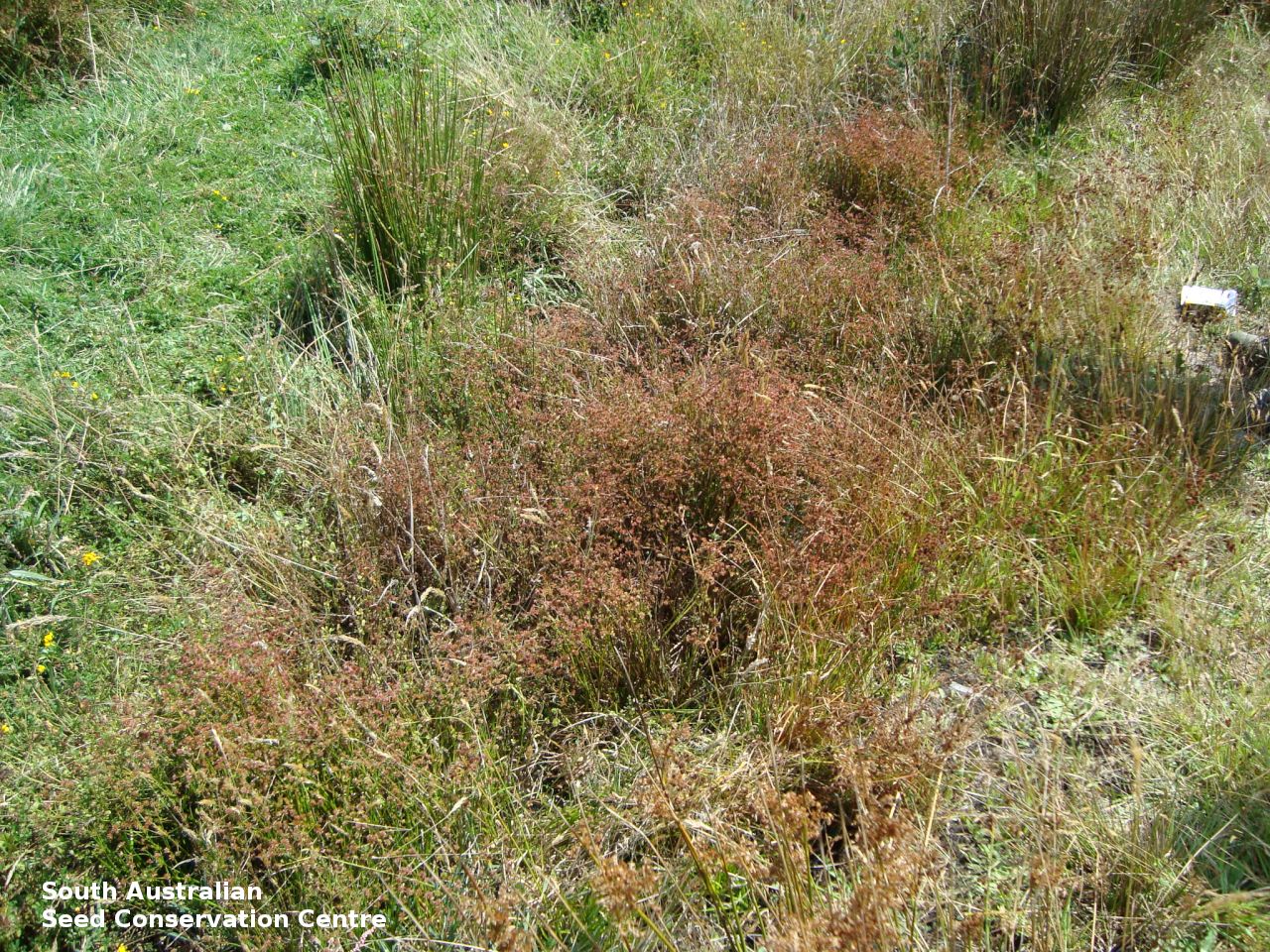
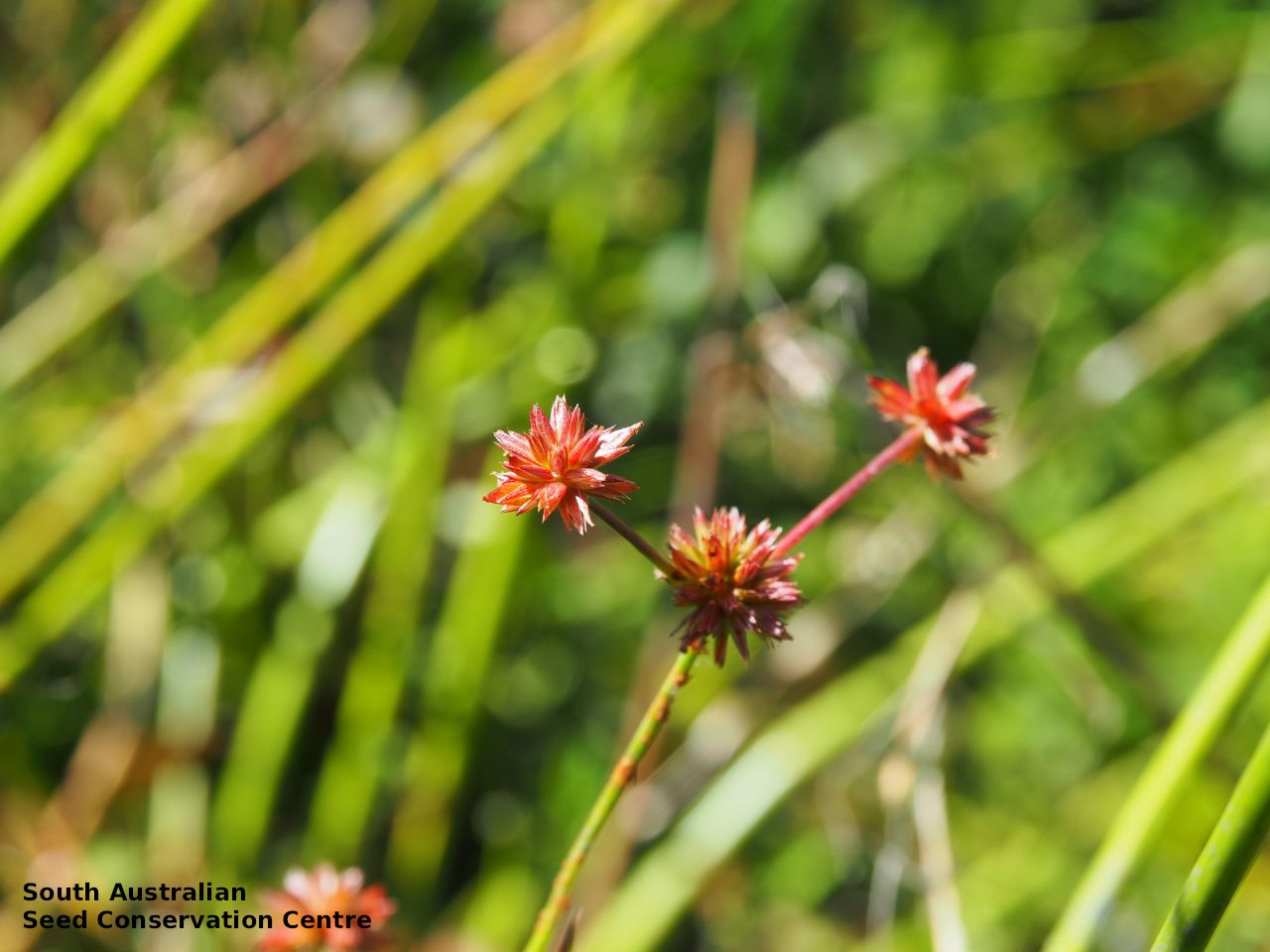
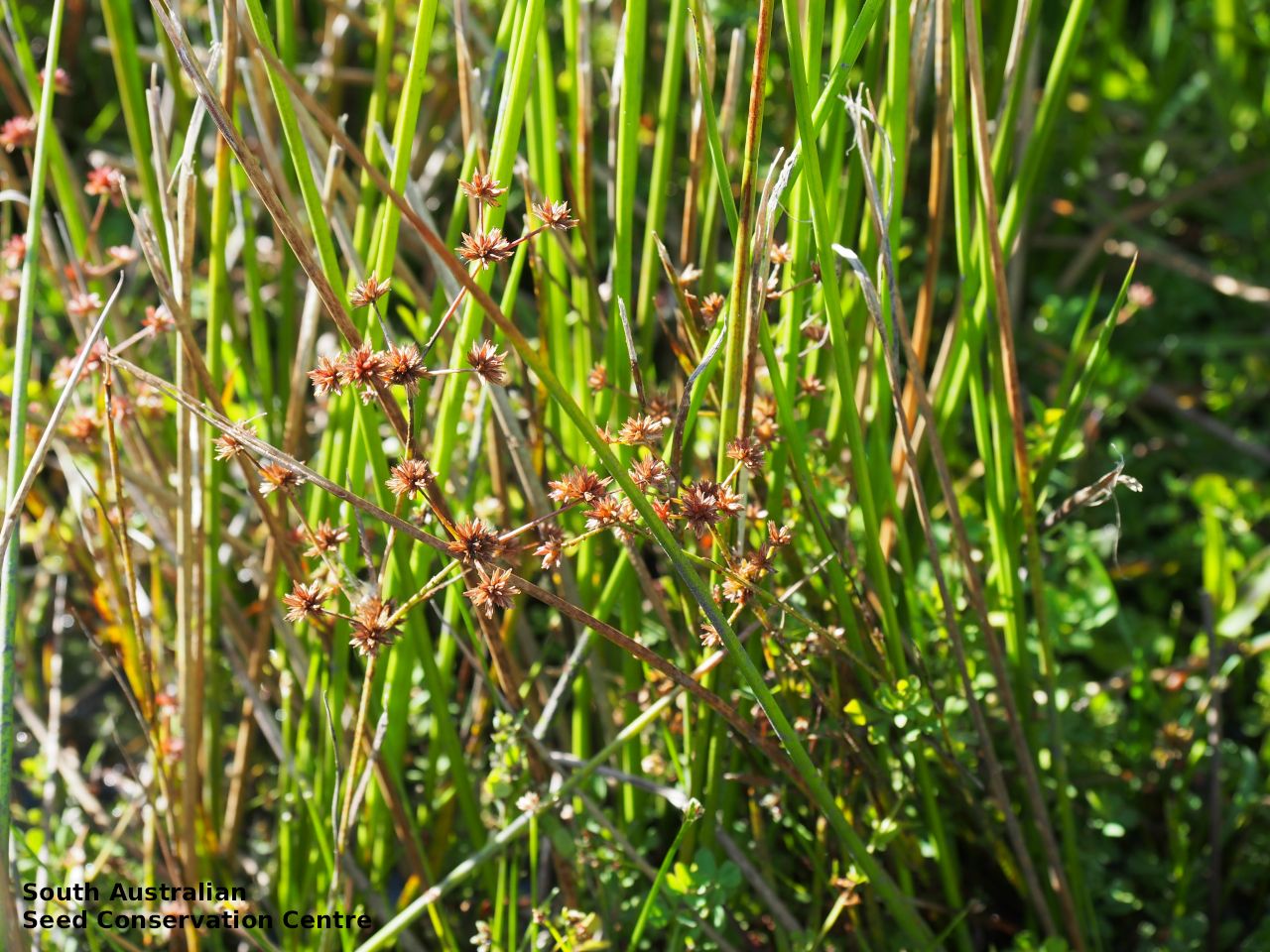
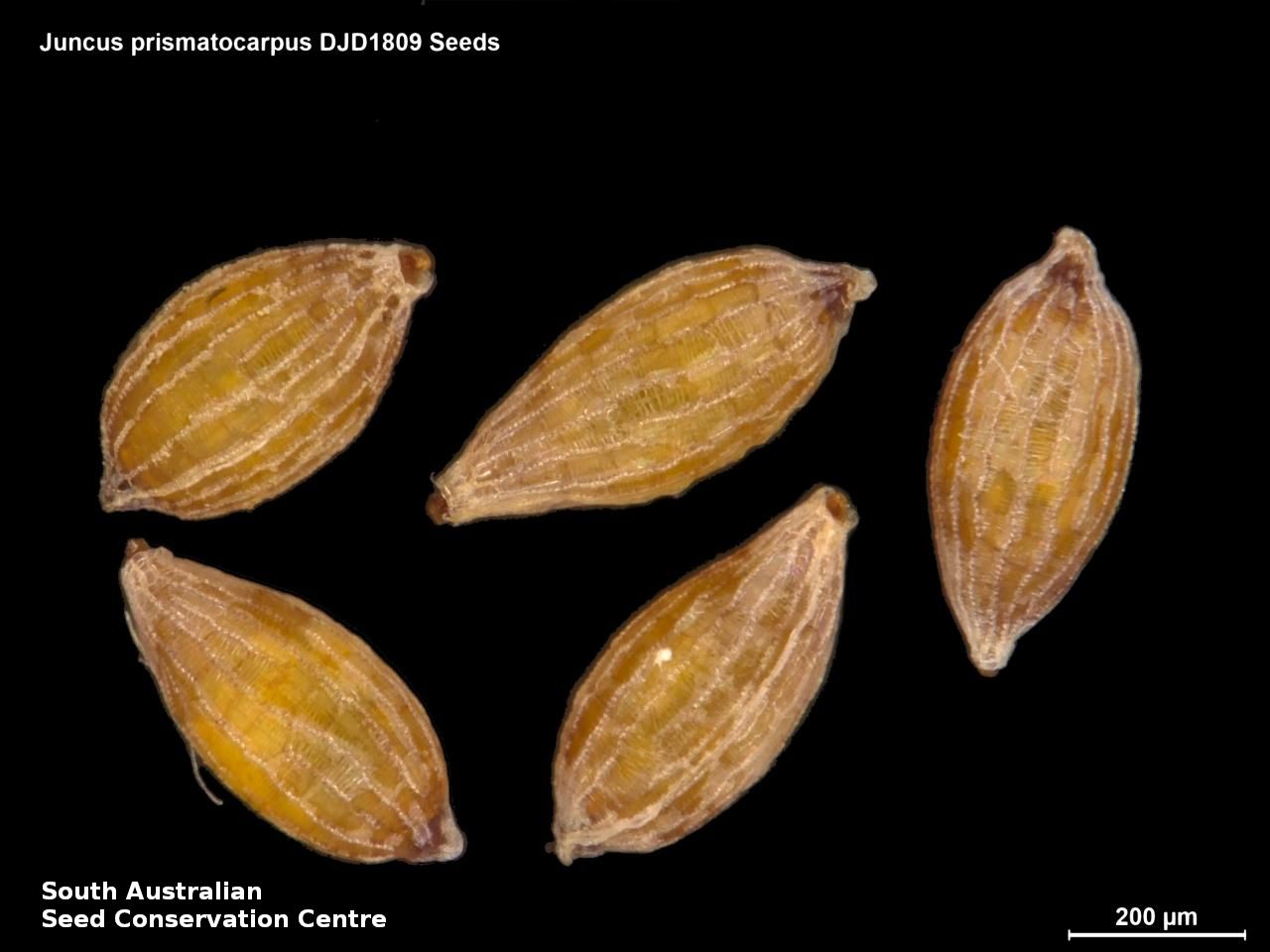
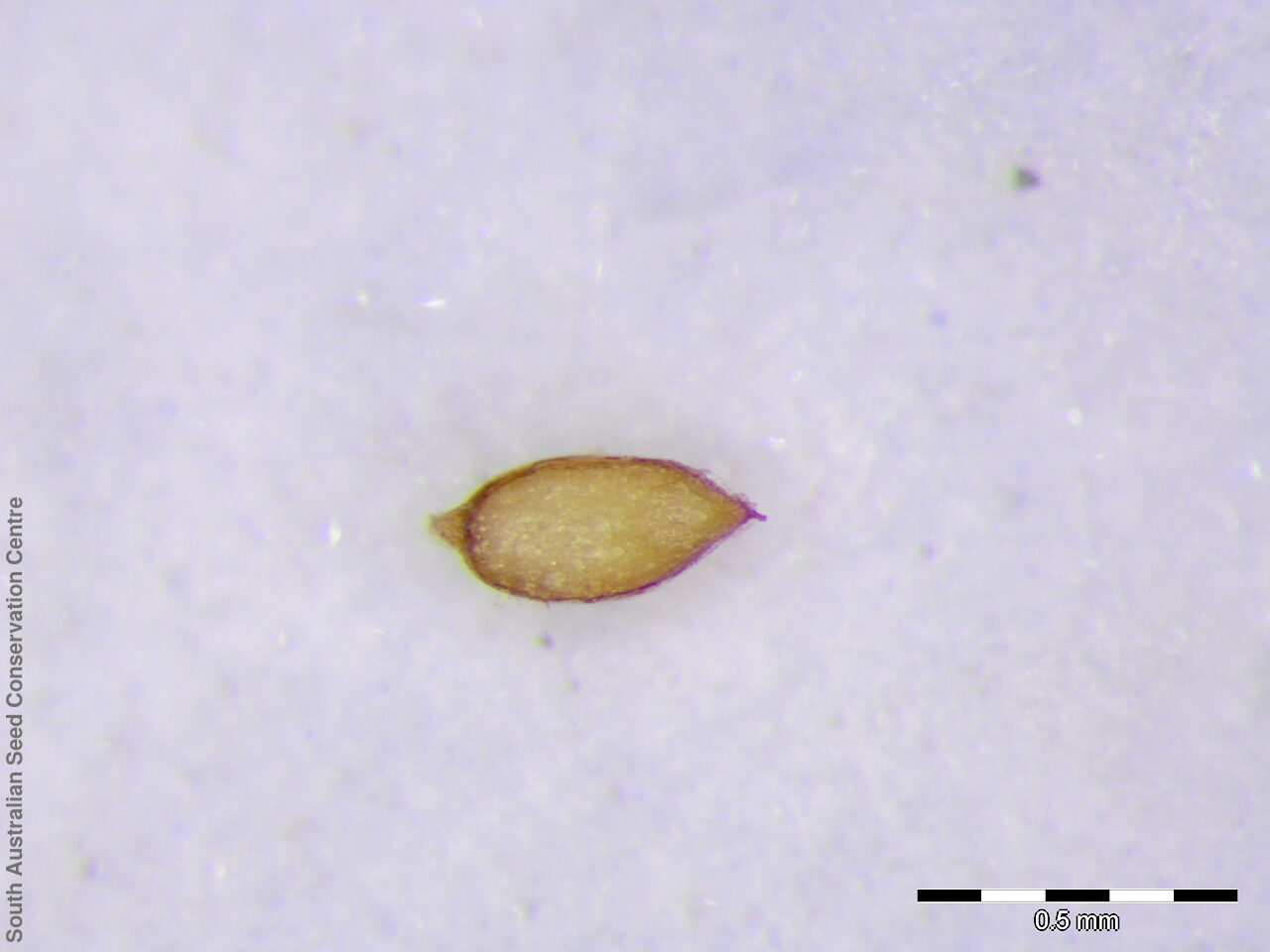


Etymology
Juncus from the Latin 'jungere' meaning to tie or bind; referring to the use of the rushes for weaving and basketry. Prismatocarpus from the Latin 'prismaticus' meaning prism-shaped and the Greek 'carpos' meaning fruit; referring to the trigonous-ovoid fruit capsule.
Distribution and status
Found at Mypolonga and Mount Compass in South Australia, growing along the edges of creeks and rivers near permanent water. Also found in Queensland, New South Wales, Victoria, Tasmania, New Zealand and Asia. Native. Endangered in South Australia. Uncommon in Tasmania and common in other states.The SA Seed Bank collected and banked 80,000 seeds from a single known extant population near Mount Compass in 2017 with the support of the Natural Resources Adelaide & Mount Lofty Ranges.
Herbarium regions: Murray, Southern Lofty
NRM regions: Adelaide and Mount Lofty Ranges, South Australian Murray-Darling Basin
AVH map: SA distribution map (external link)
Plant description
Erect perennial rush to 40 cm tall with flattened leaves up the culm and dichotomous branching flower heads. Leaves hollow with multiple longitudinal tubes within. Inflorescence clusters with many pale brown flowers at the end of multi-branching stem. Flowers possibly throughout the year but mainly in summer. Fruits are clusters of trigonous-ovoid light brown capsules. Seeds are tiny brown seed to 0.6 mm long and 0.3 mm wide, with fine reticulated surface. Seed embryo type is broad.
Seed collection and propagation
Collect seeds between February and May. Collect fruits either by picking off the mature heads, those turning brown and come-off easily or break-off the whole spikes. Place the heads in a tray and leave to dry for one to two weeks. Then rub the heads with a rubber bung to dislodge the seeds. Use a sieve to separate any unwanted material. Be careful, as the seeds are very small. Seeds are brown and hard. Store the seeds with a desiccant such as dried silica beads or dry rice, in an air tight container in a cool and dry place. From two collections, the seed viability were high, at 100%.
| Location | No. of seeds (weight grams) | Number of plants | Date collected | Collection number Collection location | Date stored | % Viability | Storage temperature |
|---|---|---|---|---|---|---|---|
| BGA MSB | 54,000 (0.7 g) 54,000 (0.7 g) | 60 | 27-Apr-2006 | TST4 Murray | 1-Aug-2006 | 100% | +5°C, -18°C |
| BGA | 163,000 (2.35 g) | 50+ | 12-Mar-2010 | DJD1809 Southern Lofty | 1-Jun-2010 | 100% | -18°C |
| BGA | 80,000 (0.87 g) | 30+ | 8-Mar-2017 | DJD3640 Southern Lofty | 1-Nov-2017 | 95% | +5°C, -18°C, -80°C |
Number of plants: This is the number of plants from which the seeds were collected.
Collection location: The Herbarium of South Australia's region name.
% Viability: Percentage of filled healthy seeds determined by a cut test or x-ray.